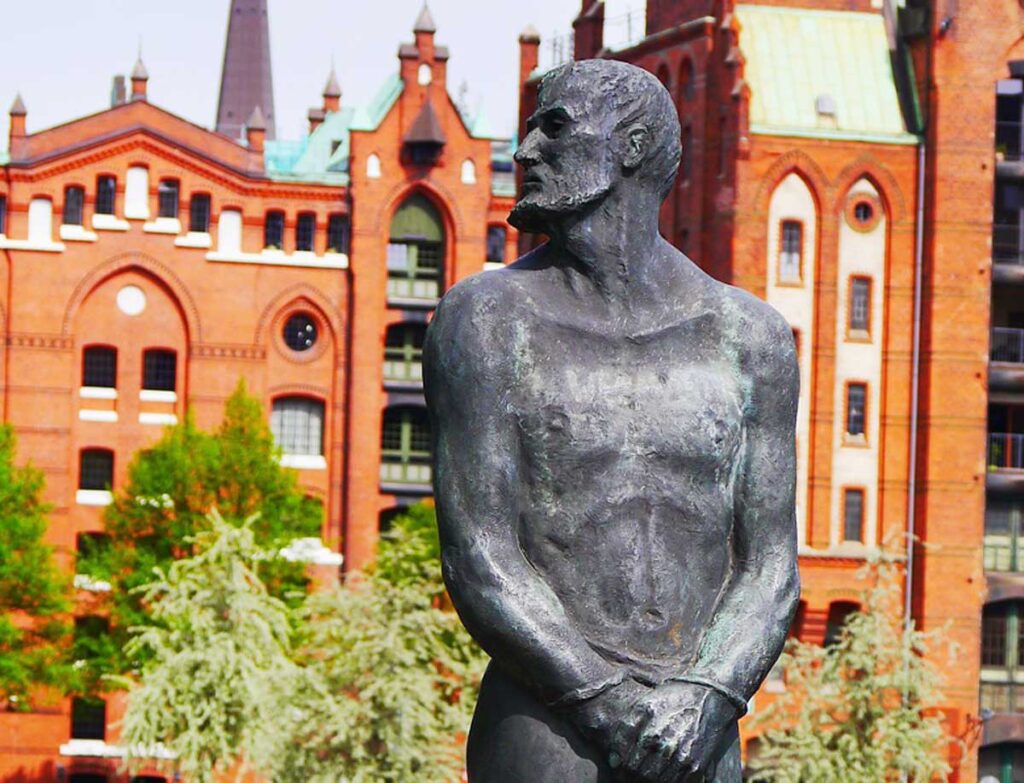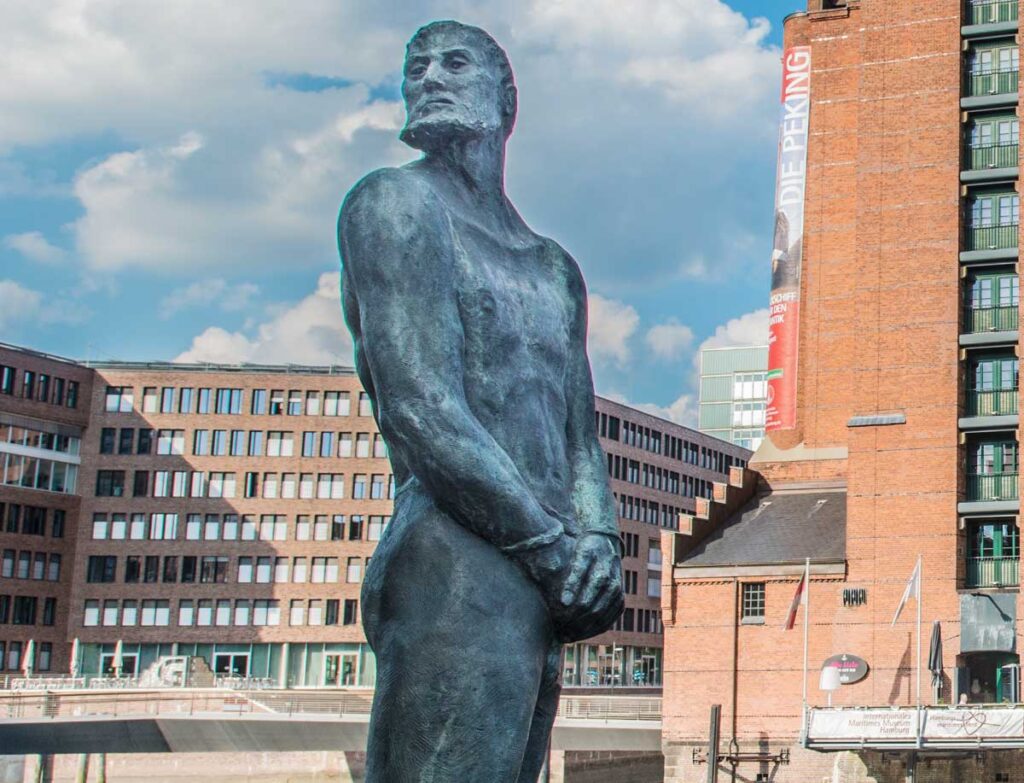THE STÖRTEBEKER MONUMENT
Memories of the infamous buccaneer

Klaus Störtebeker: Hamburg's legendary pirate
Klaus Störtebeker, the legendary pirate of the Hanseatic era, is inextricably linked with Hamburg. Although he was executed here, his legend lives on: in the form of an imposing monument in the HafenCity and a macabre relic in the Museum of Hamburg History. The statue commemorates the buccaneer and his tragic fate, while the skull in the museum fires the imagination and raises questions.
From privateer to myth
Klaus Störtebeker, whose real name was probably Nikolaus Storzenbecher, was the leader of the Vitalienbrüder, a group of pirates who plagued the North and Baltic Seas in the 14th century. They captured Hanseatic merchant ships, raided towns and villages and amassed considerable riches. They called themselves ‘Liekedeeler’. The Low German word translates as ‘equal dividers’. They often gave part of their loot to the poor. But their luck did not last forever: Störtebeker and his men were captured off Heligoland and executed in Hamburg on 20 October 1401.
Execution on the grassbrook
The place of execution was Grasbrook, then a marshy area outside the city gates, which is now part of the modern HafenCity. A monument in honour of the famous pirate stands where the gallows once stood. The bronze statue shows Störtebeker in chains, shortly before his execution. The motto of the Vitalienbrüder can be read on the pedestal: ‘God’s friend, the world’s enemy’.
A legend is still associated with Störtebeker’s execution. According to this, the buccaneer asked the mayor of Hamburg to spare the lives of those of his followers whom he was able to run past after his execution, i.e. without a head. Störtebeker is said to have passed eleven of his comrades before the executioner tripped him up by tripping up one of his legs. The mayor then broke his promise and had all the Victual Brothers executed.
The memorial – a place of remembrance
The Störtebeker Monument, erected in 1982, is a popular attraction for tourists and locals alike. It commemorates a dark chapter in the city’s history and raises questions about law and justice. Was Störtebeker an unscrupulous criminal or a fighter against the oppression of the Hanseatic League? Opinions differ, but the myth of the pirate lives on.

A skull in the museum
The Museum of Hamburg History is home to a skull that is said to be Klaus Störtebeker’s. Whether it is actually the pirate’s mortal remains is disputed. Nevertheless, the skull exerts a special fascination on visitors. It is a silent witness to the past and fires the imagination.
